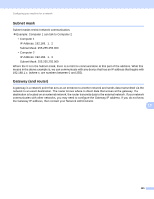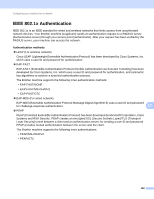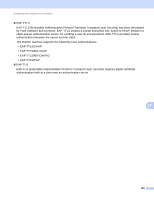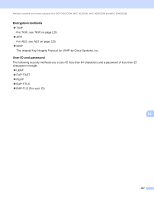Brother International MFC-9340CDW Network Users Manual - English - Page 132
Network key, Authentication and Encryption methods for an enterprise wireless network
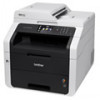 |
View all Brother International MFC-9340CDW manuals
Add to My Manuals
Save this manual to your list of manuals |
Page 132 highlights
Wireless network terms and concepts (For DCP-9020CDW, MFC-9130CW, MFC-9330CDW and MFC-9340CDW) Network key 11 Open system/Shared key with WEP This key is a 64-bit or 128-bit value that must be entered in an ASCII or hexadecimal format. • 64 (40) bit ASCII: Uses 5 text characters. e.g. "WSLAN" (this is case sensitive) • 64 (40) bit hexadecimal: Uses 10 digits of hexadecimal data. e.g. "71f2234aba" • 128 (104) bit ASCII: Uses 13 text characters. e.g. "Wirelesscomms" (this is case sensitive) • 128 (104) bit hexadecimal: Uses 26 digits of hexadecimal data. e.g. "71f2234ab56cd709e5412aa2ba" WPA-PSK/WPA2-PSK and TKIP or AES Uses a Pre-Shared Key (PSK) that is 8 or more characters in length, up to a maximum of 63 characters. Authentication and Encryption methods for an enterprise wireless network 11 An enterprise wireless network is a large network, for example using your machine in a business enterprise wireless network, with IEEE 802.1x support. If you configure your machine in an IEEE 802.1x supported wireless network, you can use the following authentication and encryption methods. Authentication methods LEAP For LEAP, see LEAP (For wireless network) on page 122. EAP-FAST For EAP-FAST, see EAP-FAST on page 122. PEAP For PEAP, see PEAP on page 122. EAP-TTLS For EAP-TTLS, see EAP-TTLS on page 123. EAP-TLS For EAP-TLS, see EAP-TLS on page 123. 11 11 126



